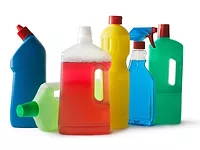From Cuticles to Counter Tops: Alcohol Sanitizers Aid Hygiene

Good personal hygiene with an emphasis on handwashing is cited by leading experts and regulatory agencies as one of the most significant controls in avoiding microbial contamination of foods. The facts speak clearly on this point:
* According to the U.S. Centers for Disease Control and Prevention (CDC), handwashing is the single most significant means of preventing the spread of infection, and poor personal hygiene is the second most common cause of foodborne illnesses in food-handling operations.
* The CDC reported that one of every five foodborne illness outbreaks reported in the U.S. are traced to infected employees as the source of contamination. Most of these outbreaks involve fecal-oral bacterial agents spread as a result of poor personal hygiene practices by employees. This includes transmission of pathogens from unclean hands to food, often by a food handler who has not washed after using the toilet, or transmission of microorganisms from raw, uncooked foods to hands, and then transferred to other foods that are served and consumed raw.
* The CDC estimates that around 40%-50% of pathogens enter the body through the nails, cuticles, creases and crevices of the hands. Studies show these are the same areas most frequently missed in handwashing.
Today, a concerted movement is underway by the food industry to develop multiple-hurdle strategies to improve the effectiveness of personal hygiene in the sanitation program. In addition to increased emphasis on employee training in proper handwashing techniques, the food industry is rapidly adopting alcohol sanitizers as a follow-up disinfection step to handwashing.
Alcohol Sanitizers Add Value to the Antimicrobial Aresenal
Spurring increased interest by the food industry in the use of alcohol-based sanitizers is the publication in October 2002 of new hand hygiene guidelines by CDC that advise the use of alcohol-based handrubs to protect patients in health care settings. Though specifically geared toward health care personnel, the guidelines provide a new impetus for the food industry to consider using such sanitizers as an additional intervention step in their handwashing regimens, says Hillard Witt, president of Penn Valley, CA-based Best Sanitizers, Inc., a leader in pathogen reduction technology serving the food processing, foodservice, health care and consumer industries.
"We understand that handwashing is essential in any effective HACCP program," says Witt. "However, we feel that handwashing alone is not enough. Considerable concentrations of bacteria remaining on the hands, even after using antibacterial soaps.
"In fact, it is estimated that poor personal hygiene accounts for about 23% of foodborne disease, which is about the same percentage caused by improperly cleaned equipment. This is so significant that hands have become a major critical control point in most companies' SSOPs. Studies show that alcohol sanitizers are highly effective in eliminating bacteria, viruses and fungi; they do not promote the emergence of microbial resistance, are fast acting, and when used with appropriate dispensing systems, can be a significant improvement in a facility's hand hygiene program."
Alcohol sanitizers are available as gels, handrubs or rinses, and contain more than 60% of either ethanol or isopropyl alcohol. Good hand hygiene requires that the hands are washed thoroughly, leaving no visible soil, before the application of an alcohol sanitizer as an added disinfection step.
Achieving maximum bacteria reduction is the ultimate goal of this extra disinfection step, notes Witt. "Alcohol has been shown to kill 99.9% of bacteria, fungus and virus, but there is a proper technique for applying these sanitizers to achieve efficacy. The first challenge food-handling operations face is getting employees to comply fully with handwashing protocols. But, even if you get people to comply, the actual technique used to apply the product is inadequate in many cases, because the areas of the hands most frequently missed in handwashing--cuticles, nails, and creases in the hands, as indicated by red areas in Figure 1--are indeed missed.
"We believe alcohol gels can be a problem because the user may simply rework the same areas of the hands as in handwashing, still leaving the hands at risk for cross-contamination," continues Witt. "Also, if the gels' thickeners are not rinsed off after being applied, they run the risk of creating a barrier and trapping bacteria to the skin. Since Best Sanitizers does not use thickeners, our sanitizer can be atomized, allowing for complete coverage, and without the worry of creating a barrier on the skin."
Witt adds that alcohol-based sanitizers are moving beyond hand hygiene applications to food-contact surface applications. His company has developed a rapid kill, no-rinse surface alcohol-quaternary ammonia mix surface spray approved by the U.S. Environmental Protection Agency (EPA) for food contact surfaces. "In Europe and Japan, alcohol has been a major tool for bacteria control on equipment in the food processing and food service industries for years. Over the past several years, many of our customers have come to us with difficult issues where traditional sanitizers were problematic, particularly with water-sensitive equipment and environments. An alcohol-based sanitizer, which evaporates quickly and only requires a 60-second dwell time, is an ideal solution to complete the sanitation cycle in those touchy areas, saving time and protecting valuable equipment that can be damaged by the traditional water-based sanitizing methods."
bestsanitizers.com
Looking for quick answers on food safety topics?
Try Ask FSM, our new smart AI search tool.
Ask FSM →








